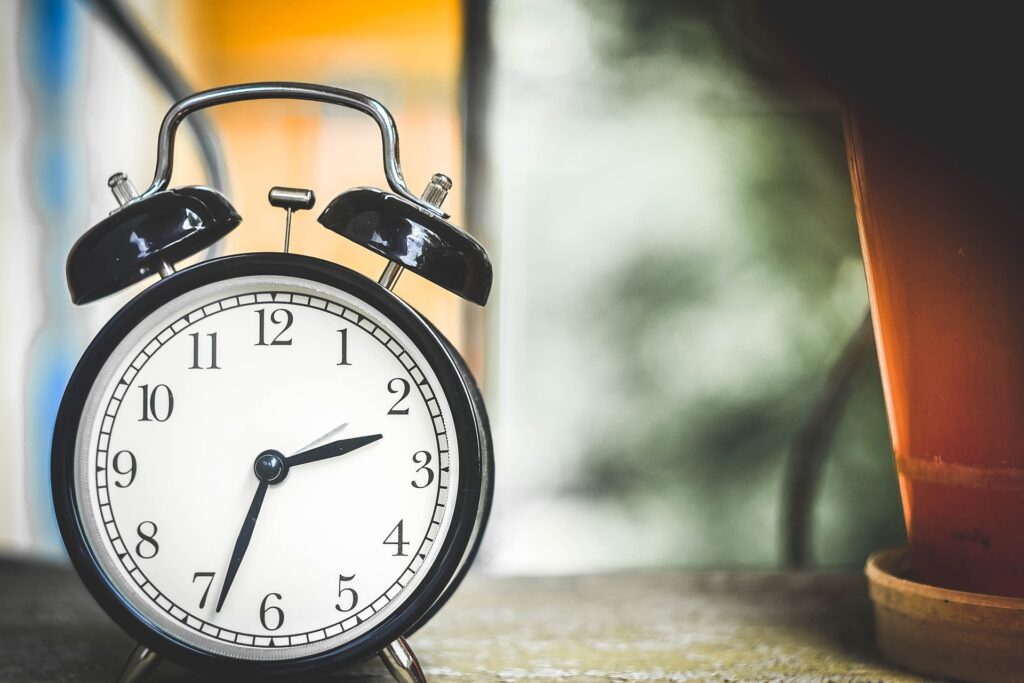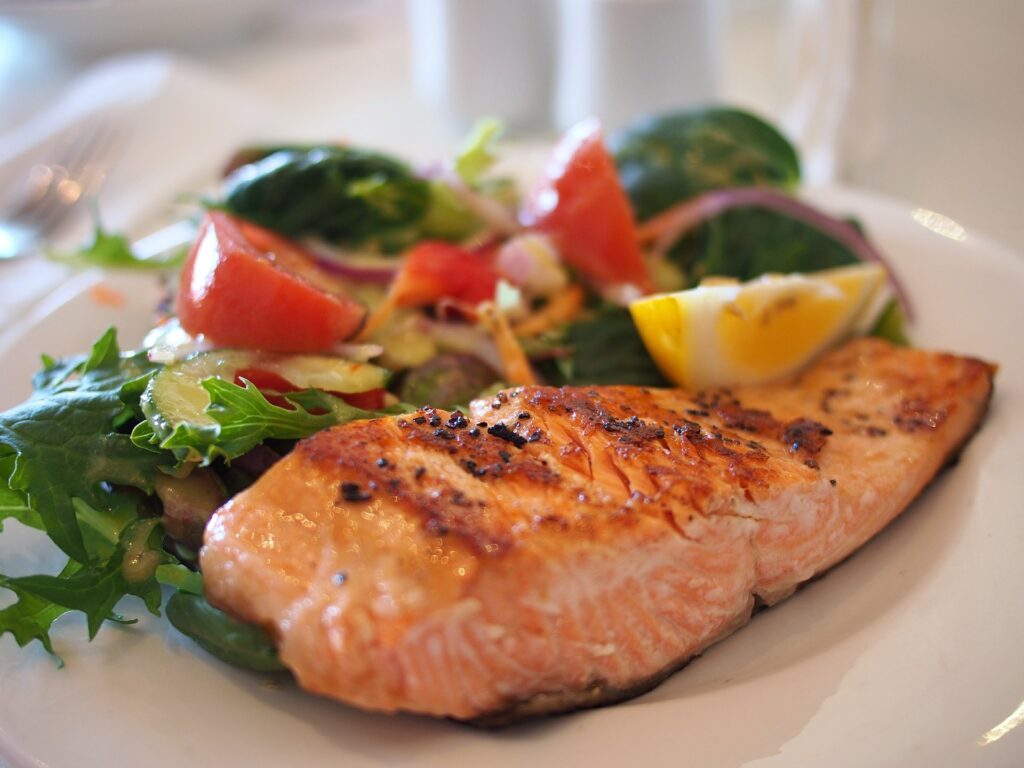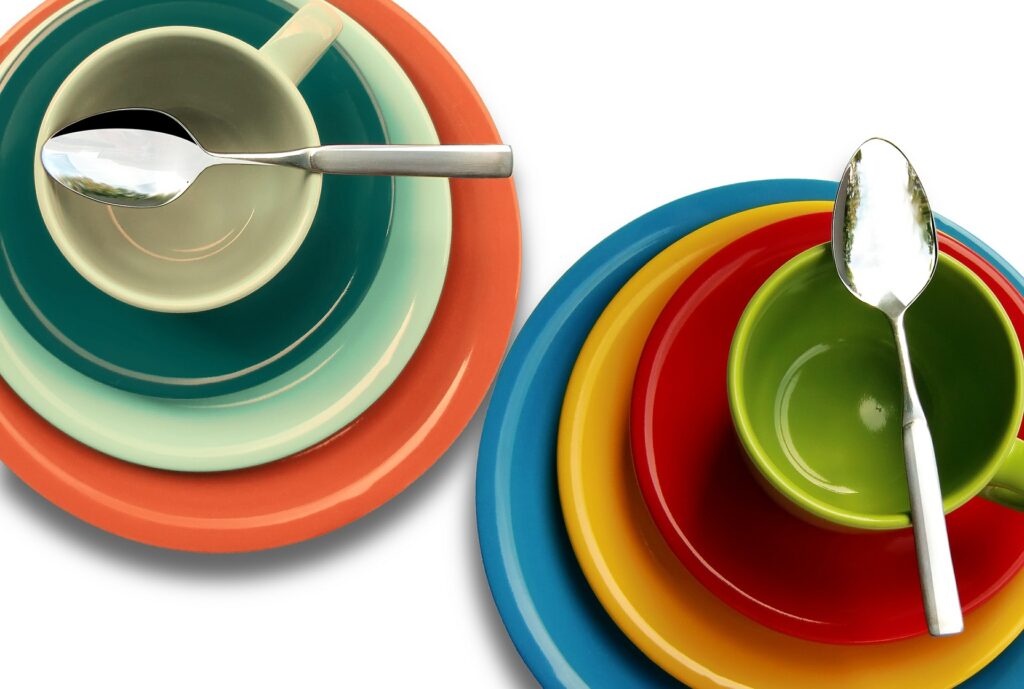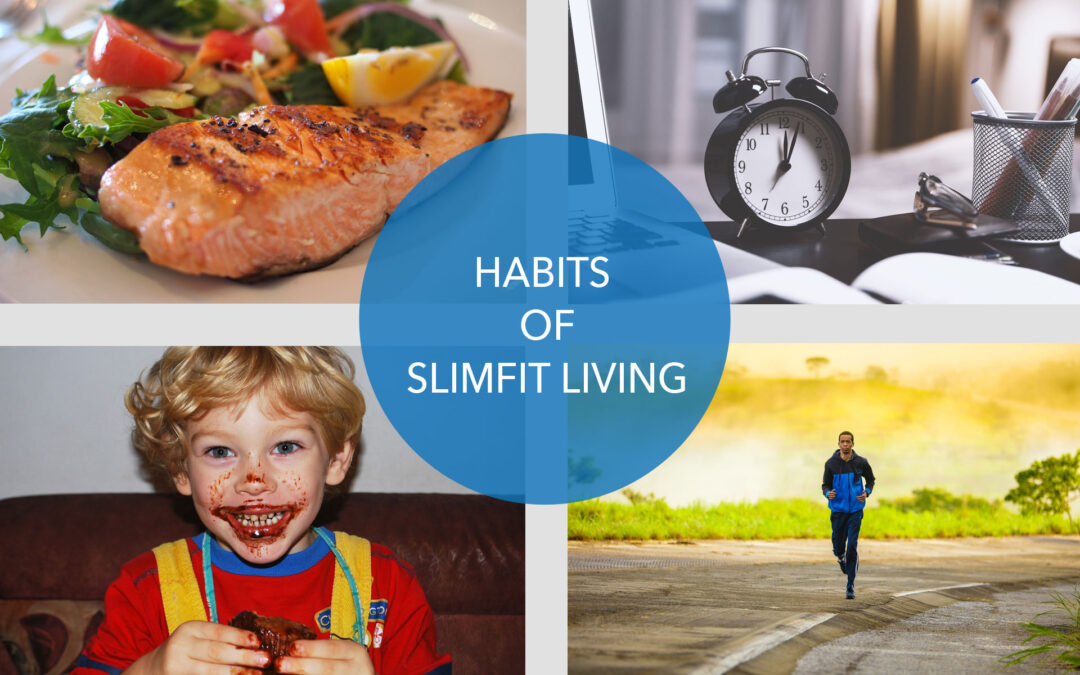You lose weight in the kitchen and tone up in the gym.
In 2015, I lost 50 lbs, and my wife lost 25 lbs using the principles I teach. Since then, I’ve developed a passion for helping people lose weight and keep it off. For many people, losing weight does much more than taking the weight off. It boosts their self-esteem, helps them to become more confident, and empowers them to believe in themselves that they can do whatever they set their mind to do. In my practice, I put many of my obese and overweight patients into my intensive behavioral and dietary therapy program (IBDT) and offer monthly visits to my clinic with coaching on how to lose weight. I have seen tremendous results with my patients. What I teach them is not a diet but a lifestyle change. I believe diets don’t work. I focus on teaching them a new lifestyle. A lifestyle that will allow them to enjoy the good foods they love, lose weight, keep it off, and be healthy at the same time.
Below, I share with you my habits of slim fit living. They are organized into three groups. Group 1, the slim habits, are the habits that help people to lose weight. Group 2, the Fit Habits, helps people stay fit in all four dimensions of health. Group 3, the living habits, empowers people to make being slim fit a lifestyle.
GROUP 1: SLIM HABITS
To succeed with your slim-fit goals, you must do the right thing at the right time, in the right way.
Three things are important for health and weight loss: when you eat, how you eat, and what you eat.
As I have observed slim-fit individuals and researched healthy eating habits, I’ve discovered that slim-fit people are 1) Intuitive eaters and 2) Mindful eaters. In most cases, habit 1 and habit 2 explain why these people effortlessly maintain their weight and health without even trying.
# 1. WHEN TO EAT (and when not to eat)
As you study slim fit living, it is very helpful to think of the 5Ws and 1H of healthy eating.

When should you eat?
- Eat only when you’re physically hungry. Don’t eat when you are not!
- Eat at level 7 hunger. A lot of people don’t know when they are hungry. They are so used to eating when the clock says it’s time for breakfast, lunch, and dinner and taking snacks in between that they don’t know what it means to be hungry. In my courses, I teach people to reconnect with their bodies and learn to experience and recognize hunger signs. Hunger is not harmful. I teach them a 10-point hunger scale and recommend eating at level 7.
- Eat during a Brief Mealtime Window (BMW): Eat within a brief mealtime window. Eat all your meals within a 1 to 7-hour window. Don’t graze all day or spread your meals out. Pick a window, like 5 hours, and stick to it. Eating during a BMW is intermittent fasting.
- Fasting. 1) Intermittent fasting and 2) longer fasting. Intermittent fasting was a key part of my 50 lb weight loss. I have been fasting since 2002. Fasting is great for your health. Can you fast? If you are healthy, you can. Millions of people around the world do it every year! However, you can fast and still gain weight if you binge-eat at the end of the fast.
Related article: When to Eat
Related Article: Top 7 Rules for Losing Weight and Keeping it Off.
When you shouldn’t eat.
- HALT. Don’t eat when you are very hungry, angry, lonely, or tired. See this article, HALT. When you are very famished, drink 1-2 cups of water before eating. Grab something small and light and chew slowly until your hunger level comes down.
- Fear. Don’t eat out of fear. For example, some people are afraid of hunger and so eat to avoid it. Instead, educate yourself and know that hunger is your friend, not enemy.
- Thirst vs. Hunger. Don’t eat when you are thirsty. Learn to tell the difference between when you are hungry and when you are thirsty. Many times, the body can’t tell the difference, so I recommend that people drink first and be hydrated before they eat.
Many people eat breakfast when they wake up, lunch because it is noon or 1:00 pm, and dinner because the time is between 5-6 pm. They don’t listen to their bodies to tell them when they are hungry. The slim fit paradigm shift is to start listening to your body and eating only when you are physically hungry.
#2. HOW MUCH TO EAT
When should you stop eating?
Eat until you are satisfied. Eat until you are 80% full. Not 100% full. Your stomach is the size of a loosely clenched fist. Don’t eat to prevent hunger. Hunger is not bad. You can always eat later when you truly feel hungry. I tell my patients, Eat only when you’re hungry, stop when you are comfortable. The Japanese have a saying, “hara hachi bu”, which means eat until you are 80 percent full. The Okinawan people often live to 100. They are the longest-lived, healthiest people on the planet and they practice hara hachi bu. As Hippocrates, the father of modern medicine, said over 2500 years ago, “If we could give every individual the right amount of nourishment and exercise, not too little and not too much, we would have found the safest way to health.” To help work against beliefs that we have to eat large quantities of food, it helps to remember the size of your stomach – the size of a loosely held fist. It’s not big at all.
Related article: How much should I eat?
#3. HOW TO EAT

How should you eat?
Eat slowly. Eat mindfully.
- Eat slowly by doing the following things.
- Take 20-25 minutes to finish eating. Why? It takes about 20-25 minutes for your body to tell the satiety center in your hypothalamus that it is full. I recommend that you initially set a timer on your phone or another means to 20 minutes to make sure you take at least 20 minutes to eat. Many rapid eaters who don’t time themselves may think eating for 10 minutes is an eternity because this is longer than they are used to. Timing helps make sure they are taking at least 20 minutes to eat. Don’t go for a second serving of food until it has been at least 20 minutes since you started eating. When I work with my patients, one of the things I like to do is ask them to tell me if they are a fast or slow eater. I give them a context. Almost without fail, my obese patients are all fast eaters. If you eat fast, you are bound to overeat. Why? As I’ve said, it takes 20-25 minutes for your body to send chemical messengers to the brain that will make you feel full.
- Take a break during your meal. I recommend taking a 1-2 minute pause or break in the middle of your meal.
- Take small bites. Don’t take big bites that fill your mouth up. Instead, take small bites.
- Don’t eat hot food. Let it cool down. Eating hot food will force you to eat rapidly. Because the food is hot, you won’t let it spend enough time in your mouth.
- Chew, chew, chew. Chew 20-30 times. Move food from one side of the mouth to the other.
- Put the fork down or spoon down.
- Savor your food. 1) Make eating an enjoyable experience. 2) Start with your favorite foods first. Eat one food at a time. 3) Eat with your five senses: Eat mindfully. Smell the food, try to identify the flavors and textures as you eat. To learn more about how to savor your food, read here.
- Gather all the food before eating. Don’t eat a banana, a piece of bread, or a cookie while waiting for your food to come.
- Eat without Distractions. Avoid all distractions and Focus on your food. A lot of us pride ourselves on multi-tasking. We eat while walking, working, cooking, shopping, driving, reading, watching TV, talking on the phone, etc. Eating while doing any of these things increases the chance of overeating. Focus on your food and chew slowly, savoring and enjoying it and noting the taste that you are getting from it. It’s easy to eat impulsively when you are distracted. It’s common for people to eat so fast while distracted that they are shocked they just finished a large quantity of food without even noticing.
#4. WHAT TO EAT

Obesity is a hormonal problem and the hormone that causes obesity is mainly insulin, even though cortisol also causes weight gain. Eating foods high in sugars increases your insulin levels. So does eating too frequently.
I recommend eating low-carbohydrate, high-fat meals for health, wellness, and weight loss. Below are some suggestions.
- Don’t drink your calories. No juices, sodas, beer. Wine if you must because of its health benefits.
- No snacks unless you are truly physically hungry. Note that most people are only truly hungry twice per day. A few are hungry three times per day. If you are hungry beyond three times per day, talk to your doctor.
- Drink a lot of water. At least 2 liters or eight 8 oz glasses per day. I drink about 3 liters of water per day. If you have heart failure or any other chronic conditions, talk to your doctor.
- Drink other liquids as needed.
- Eat real food. Ditch processed foods! Make it yourself if you can. When you eat out, eat healthy foods.
- Eat low-carbohydrate, high-fat foods. Eat with carbohydrates in the minority, not the majority. A low-carbohydrate diet doesn’t mean a high protein diet. You minimize carbohydrates and make up the difference with healthy fats. Fat is good for you. You can eat fat and get thin. Fat is tasty and helps you stay full longer! Plus, research has shown that fat is healthy. The problem is carbohydrates
- Eat only what you absolutely love. Become a picky eater. Eat only healthy things that you feel like eating when you are hungry.
- Be careful with white foods. Grains, potatoes, pasta, or sweets (sugars). They make you gain weight.
- Read the labels. If it says, “fat-free”, “low-fat”, or “light”, stay away from it.
- Eat more fiber! High fiber foods help you get full faster and stay full longer. They also prevent diabetes, heart disease, colon cancer, etc.
- Eat proteins with each meal. It helps you get full and stay full longer.
- Eat a small dinner, if hungry.
GROUP 2: FIT HABITS

- Physical health: In addition to healthy eating habits, get moving, exercise every day. Remember, You lose weight in the kitchen and tone it in the gym. Sleep and rest. Take a nap, if you can. If you can take a 30-minute power nap in the middle of the day, do it. Don’t exceed an hour, otherwise, you may find it difficult to sleep at night.
- Psychological health: Do self-care. Stress less, sleep more. Foster a healthy emotional and mental life. Do emotional and mental first aid.
- Social health: Learn to develop healthy, life-giving relationships.
- Spiritual health: Connect to your spirituality. We are spiritual beings. Complete health requires spiritual health. To become slim fit, we must change harmful beliefs and values. That involves rewiring your brain. It requires developing healthy beliefs & values about food and eating. I combine a 12 Step Program based on a modification of AA’s 12 Steps with cutting edge information on healthy eating to treat my patients with overweight and obesity. 12 Step programs provide a needed spiritual component and encourage collaboration with other people that can become accountability partners.
- Calling(vocation) and purpose. Do work that you feel called to do and that is inspiring and fulfilling. That reduces stress and anxiety within your life and gives you purpose that is crucial to making wife decisions. If you feel that your car has a long fun journey ahead of it and you don’t want anything getting in the way of that fun journey, you will take care of it, put the right gas and oil and do a tune up. Its the same with your health. If you have a purpose, you are more likely to be motivated to take care of yourself.
- Financial health. Effective financial stewardship reduces stress in one’s life. Stress is a huge reason why people overeat.
Related article: 21 Effective Ways to Reduce stress, Improve your health, and Enjoy your Life
GROUP 3: LIVING HABITS
Design your environment to help you eat and live well.

- Use smaller plates sizes.
- Quit talking about food too much.
- Keep only healthy foods and snacks in your home.
- Don’t shop when you are hungry.
- Hang-out with friends who care about their health and are doing the things that help them to be slim fit.
In conclusion, Weight loss comes down to healthy eating habits, portion control, healthy exercise habits, and taking care of yourself. The rest is details. As a primary care physician, I tell my patient’s this: They can HEAL themselves through Healthy Eating & Active Lifestyle. I believe the same thing for you!


